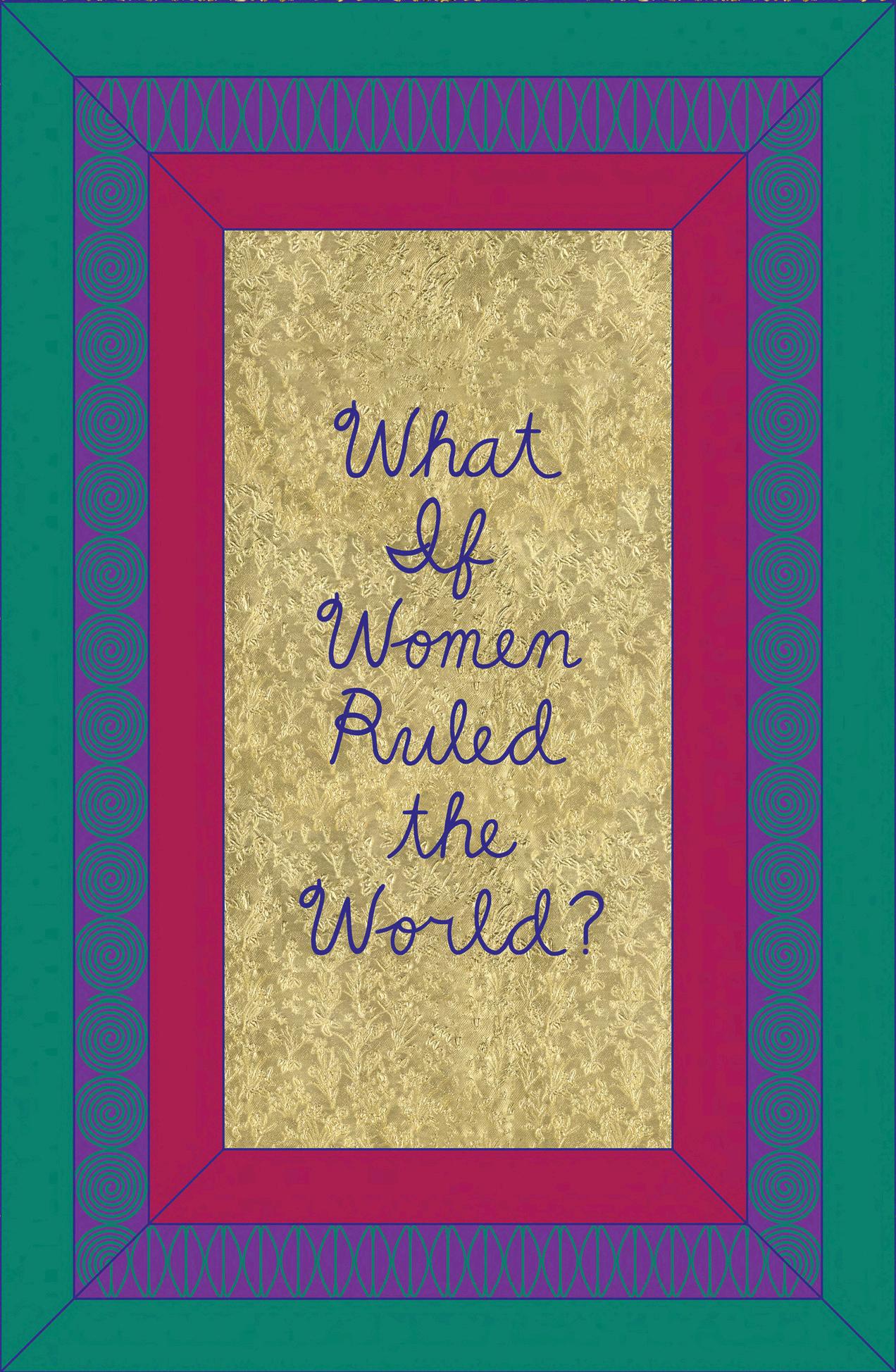

THE ARTS ARCHIVE THE ARTS ARCHIVE
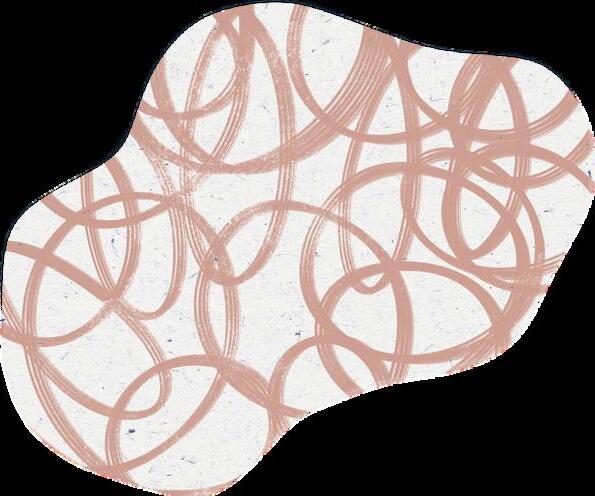
TABLE OF TABLEOF
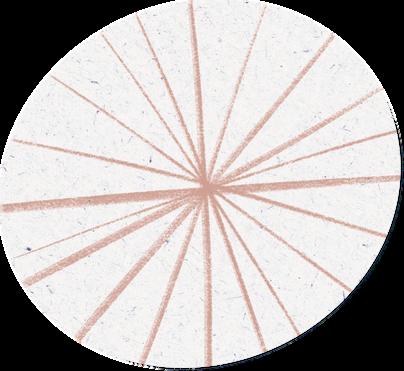


ZANELE MUHOLI SPOTLIGHT

YAYOI KUSAMA SPOTLIGHT
Learn about the challenging story behind one of the most iconic contemporary artists of our time
An introduction to Muholi’s powerful photography, documenting black lesbian, gay, bisexual, transgender and intersex people's lives in South Africa

FEMALE ARTISTS
OVERSHADOWED BY THEIR LOVERS
Hear about the stories of the women only remembered for the men in their lives
RECOMMENDATIONS
A few ideas of ways to engage with art beyond the gallery wall, from new films and documentaries to insightful books
Why is the white male still our norm in art? Why is the white male still our norm
Ask anyone to name a famous artist and you’ll hear a whole range of answers. Michelangelo, Da Vinci, Van Gogh, Picasso. Now there is nothing wrong with any of these answers: they are truly great artists, masters of their craft, innovative creators who each changed the course of art history. But, there is something else that these names all have in common, and it’s not just their artistic abilities: they are all white men. So why is public knowledge of artists dominated by the western male?
A recent study found that 85.4% of the works in the collections of all major US museums belong to white artists, and 87.4% are by men. Data from the Tate galleries suggests that UK institutions are not much better: just 15% of the artists in the Tate’s permanent collection were women in 2014. Therefore, it can be no surprise that the white male has become our cultural default, when it is seemingly all we know and are surrounded by. The problem is that museums take this majority for granted, as ‘neutral, objective, normal, professional and high quality’, thereby making art made by white men appear largely as the norm and by extension constructs a system of othering, which perpetuates oppression, racism, sexism, and colonialism.
in art?
African American artists: 1.2%
Asian artists: 9%
African American artists: 1.2% Asian artists: 9%
Hispanic and Latinx artists: 2.8%
Hispanic and Latinx artists: 2.8%
The predominance of the white artist within the art world potentially posits that they are the general standard within such institutions, which may have the consequence of perpetuating the idea that people of colour might deviate from this norm. Whilst this certainly is not the view held by the vast majority today, it is worth acknowledging that in the past, the idea of the ‘artist’ did not particularly embrace people of colour, nor anyone who wasn’t male, the pervasive hold of which is arguably still one of the greatest threats to transformational change that is needed within museums today in order to reflect our ever evolving world. However, the simple act of recognising that ‘museums are not neutral’ could be a meaningful and urgent step towards gaining awareness of the powerful role that white dominant culture plays within our institutions. It is a crucial step toward recognising one’s own role in questioning it, interrupting it, and taking transformative action to change it.
Of course in the last few years, there has been a huge effort to rectify this imbalance, with many galleries and museums focusing their exhibitions and acquisitions on artists who previously were shut out of the artistic sphere. Yet one may wonder, by introducing these works to counter the imbalance, does this only reinforce the white male as the norm? And therefore does that make us believe that art created by a minority group is ‘other’, and by extension not representative of the human condition? The problem with the preeminence of the white male within the art world and beyond is a never ending issue that doesn’t quite seem to have a solution yet; all one can do is embrace all voices so that we can slowly but surely chip away at this exclusive narrative.
Orr *in US museums *in US museums
oshy
O
rr Roshy
Now You See Us NowYou SeeUs
WOMEN ARTISTS IN BRITAIN 1520-1920
Spanning 400 years of art history, Tate Britain’s Now You See Us is a revelation, showcasing the extraordinary contributions of over 100 women artists who defied societal norms. Featuring over 150 works by trailblazing women like Mary Beale, Angelica Kauffman, Elizabeth Butler, and Laura Knight, each piece offers a window into the struggles and triumphs of these remarkable artists. Their stories remind us of the hardwon freedoms women enjoy today, thanks to their relentless efforts to fight for their right to an art education, to participate in exhibitions, and to make a career in the arts. Tate’s mission was to redress the huge gender imbalance in British art history by ensuring these artists are not only seen but remembered.
The exhibition begins with two striking works by Italian artist Artemisia Gentileschi (1593-1652), both her powerful Self Portrait as the Allegory of Painting and Susanna and the Elders (1638-40). In her depiction of herself as the essential artist, her head is cocked to one side as she lunges forward utterly absorbed in her work as she reaches out a bared arm to add a splash of paint to the canvas she fiercely works on. This emanates her formidable presence and is a testament to female resilience in the face of adversity. The exhibition is carefully curated so that for every Gentileschi, there are another 10 unknown artists on display, thereby signalling a shift from the view that such women artists were mere anomalies, and that other women could not be artistic geniuses. Her second work Susanna and the Elders, which uses an Old Testament narrative to convey the difficulty of being a woman in an oppressive, patriarchal society, is more typical of the treatment of works by women throughout history in its sensitive rendering of Susana’s vulnerability and the elders’ predatory voyeurism. The work, first painted for Queen Henrietta, was lost in storage for years, only recognised as a Gentileschi in 2023, evidencing the fluctuation of her eminence through time, unlike her male peers. If a work by someone who equaled Caravaggio in skill could be lost and forgotten, it becomes all too clear how an entire gender’s artistic production could be suppressed. But this exhibition attempts to rectify this.
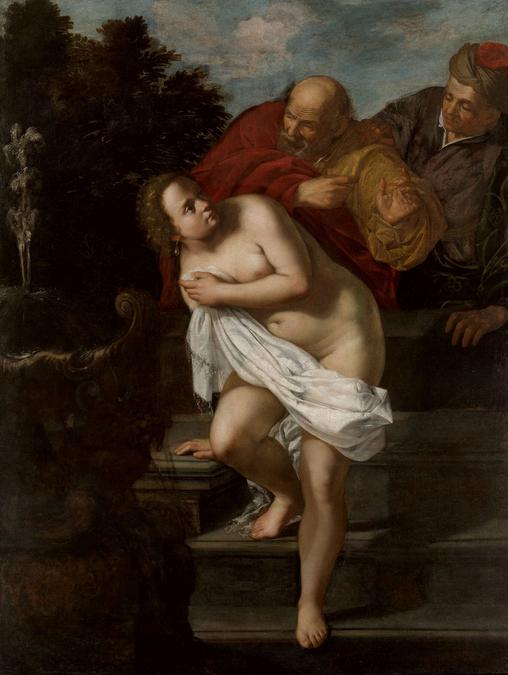
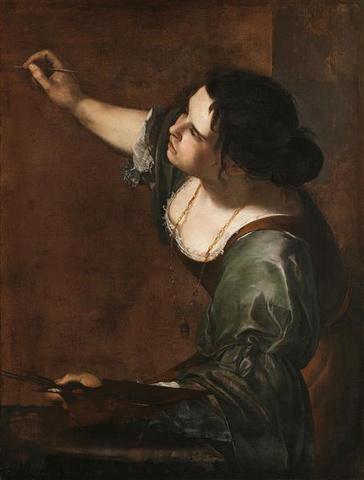

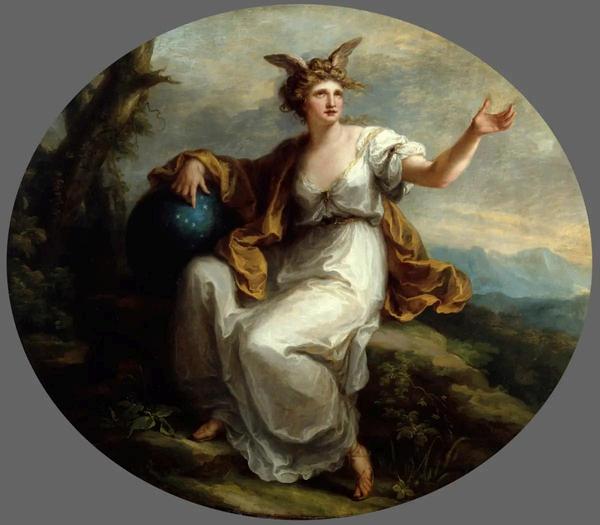
As one of the first women members of the Royal Academy of Arts, Angelica Kauffman’s depictions of historical, classical, and mythological narratives — regarded as the highest forms of art — received great critical attention in her day. Commissioned in 1778 to paint the four Elements of Art for the RA’s Council Chamber in Somerset House, Kauffman portrayed Invention as a woman, a highly provocative move since only men were considered capable of creative imagination.
Indeed, she was criticised for her somewhat androgynous portrayals of men, but given that women were barred from life drawing classes until 1893, surely this is to be expected. When Kauffman left London for Rome, Maria Cosway inherited her spot as a high profile exhibitor at the RA’s annual exhibitions. When shown in 1782, her painting of the Duchess of Devonshire as Cynthia, the Moon Goddess caused a sensation. The huge canvas shows the Duchess swathed in grey blue clouds and striding through the air, in a frightfully mesmerising and memorable mythical image. The other female RA member was Mary Moser, whose career was far less established since her focus on flowers and botanical paintings was regarded as inferior. To combat art history’s systemic exclusion of this genre, deemed suitable for ladies, the exhibition includes an entire room dedicated to scientifically accurate botanical paintings, including flamboyant florals by Mary Delany, who began paintings in her seventies.

Among the women artists who were usually rebuffed for their ‘lower arts’, such as pastel and watercolour painting, miniatures, embroidery, and needlework, Sarah Biffin (1784-1850) was an extraordinary talent, who had no arms or legs, so learned to sew, write, and paint using her mouth and shoulder. Emily Mary Osborn's 1857 painting, Nameless and Friendless encapsulates the struggle many women faced, restricted by endless rules preventing their artistic production, in its portrayal of a lonely woman, anxiously awaiting judgment from an art dealer, surrounded by indifferent men. This painting is a poignant reminder of the invisibility and lack of agency experienced by women in a maledominated society.

As we progress through the exhibition, we witness a transformation in art style, reflecting the gradual changes in women's rights over time. The works of artists like Mary Beale, whose meticulous records are kept by her husband, illustrate her professional achievements and highlight the perseverance required to succeed. These women forged ahead despite systemic barriers, often finding ingenious ways to navigate their restrictions. By the Victorian era, women artists began to gain more visibility and opportunities, although they still faced significant challenges. Florence Claxton's satirical piece, Woman's Work, humorously critiques the limited roles available to women, making light of grim realities through dark comedy. One of the exhibition's most poignant moments is Mary Grace's self-portrait, which captures her confident gaze and unwavering determination to succeed in a maledominated field. Toward the end of the exhibition, visitors encounter a captivating section on photography. Delving into the early days of this medium, it is fascinating to learn how photography revolutionised artistic expression, offering new avenues for creativity. Pioneering women like Clementina Hawarden and Julia Margaret Cameron embraced this new medium, excelling in a rapidly evolving field.
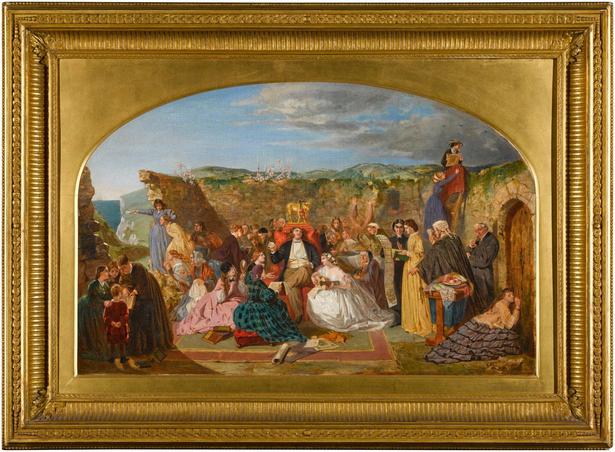
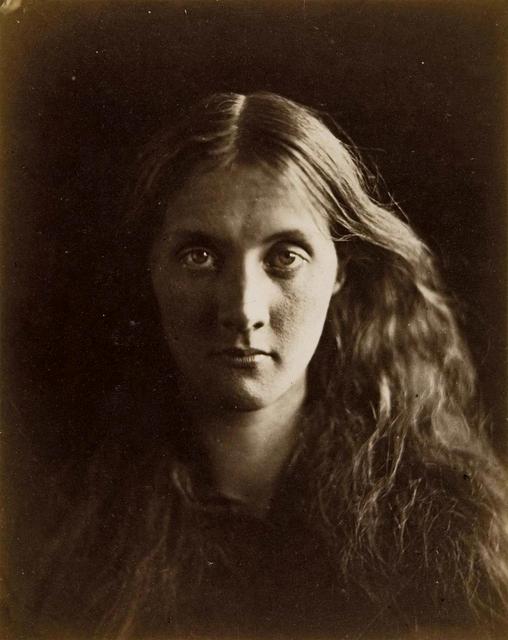
The exhibition's final room explores modernity, showcasing how women created their own paths and pursued careers with purpose and confidence. This progression is palpable, as you move from room to room, seeing how each generation of women artists built upon the foundations laid by their predecessors. By the end of the exhibition, women could now vote, travel, earn money, and express themselves as never before, cleverly highlighting how far women have come, both in art and society, after overcoming adversity and refusing to let societal rules stifle their creativity. This exhibition is a powerful reminder that the fight for gender equality in the art world is far from over but with each new generation of artists, we move closer to a future where women's contributions are recognised and valued equally.
Ernest Cole Ernest Cole
Born in South Africa in 1940, Cole grew up experiencing the extreme racism and segregation that was present in his home country, facing it directly when he was forced to leave school due to the 1953 Bantu Education Act. This enforced segregation within the schooling system, aiming to train the children for manual labour and menial jobs that the government deemed suitable for those of their race, and it was explicitly intended to inculcate the idea that black people were to accept being subservient to white.
Self-taught in photography, Cole began his career at Drum magazine in 1958, before becoming a freelance photojournalist where his photography focused largely on the black community. While working at Drum, Cole met with other young black South Africans in the arts sphere —journalists, photographers and jazz musicians — who were all involved in the anti-apartheid movement. This exposure to political ideas influenced his decision to expose to the daily evils and social effects of the apartheid through his art.
The apartheid began in 1948 and was a system of institutionalised racial segregation, underpinned by white minority rule. It meant that anyone who was not classified as white was actively oppressed by the regime, particularly through the Population Registration Act of 1950, which segregated citizensinto four racial groups Black, White, Coloured and Indian. Classified through a variety of tests by apartheid officials, Cole was able to trick the Race Classification Board by straightening his hair so that the pencil test, which identified white people as having straight hair that a pencil would fall out, considered him as coloured rather than black. Given the restriction of harsh segregation laws, those classified as black would have been unable to travel or photograph as easily, so this verdict was a ticket to slight freedom.

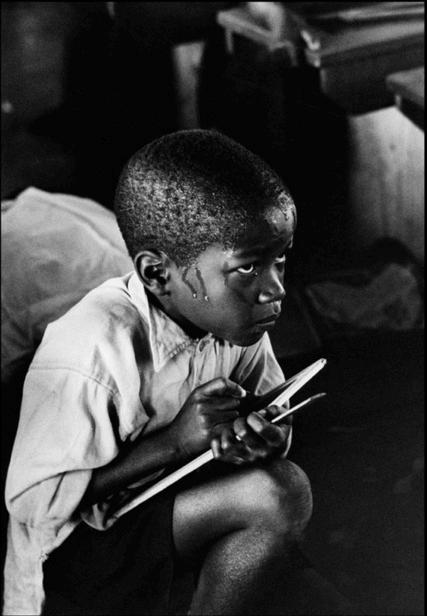
However, by 1966 it was becoming increasingly hard for Cole to work in South Africa. He took a lot of risks with some of the photos he shot, many of which could have resulted in life imprisonment –especially those taken in prisons or mines featuring people undergoing inhumane medical checks and other cruelties. Seeking to leave South Africa, he fled to New York, taking his photographs with him. The result was his book House of Bondage published in 1967, chronicling the humiliation and horrors experienced throughout South Africa. House of Bondage was the product of six years of research, photographing, and editing. Each of the book’s chapters represents a different aspect of life under apartheid, illustrating segregation’s impact on housing, education, employment, childcare, medical care, and daily life. The book was consequently banned in South Africa and in 1968 the apartheid regime permanently banned him in perpetuity and stripped him of his South African passport. However, it continues to be a powerful visual testimony and archive of the stories and memories of the Black South African population during apartheid.

Cole died from colon cancer in New York City on 18 February 1990 at the age of 49, and it was readily assumed that the vast majority of his negatives had been lost and thus his photos were gone forever. However, in 2018, 60,000 negatives were found in a bank vault in Stockholm. As a result, House of Bondage, out of print since the 1980s, was republished in 2022, making its monumental achievement widely accessible once again.
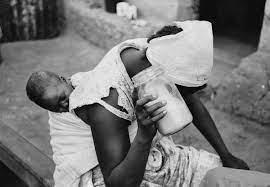
"Three hundred years of white supremacy in South Africa have placed us in bondage, stripped us of our dignity, robbed us of our self-esteem and surrounded us with hate."
Maddie Parker Maddie Parker
REVELATIONS REVELATIONS

The year is 1974 and Judy Chicago has begun working on her monumental feminist installation The Dinner Party, which subverts the male dominated iconography of The Last Supper, instead commemorating 39 important but overlooked women in history through personalised place settings on the massive ceremonial banquet. The settings consist of embroidered runners, gold chalices and utensils, and china-painted porcelain plates with raised central motifs that are based on vulvar and butterfly forms and rendered in styles appropriate to the individual women being honoured. The names of another 999 women are inscribed in gold on the white tile floor below the triangular table. Whilst this immense artwork is permanently located at the Centre for Feminist Art at the Brooklyn Museum, the exhibition features a documentary form of it. However, this is not the main focus: instead her psychedelic paintings and drawings take precedence, outlining decades of revolutionary feminist practice and mapping out themes explored within her until recently unpublished manuscript Revelations, for which this exhibition takes its name. Written at the same time as origins of the The Dinner Party began to emerge, it offers a radical retelling of mythological creation based on Chicago’s extensive research into goddess worship and women’s history.
The exhibition opens with In the Beginning, a huge nine-metre-long drawing in Prismacolour pencils which reimagines the patriarchal Genesis account of creation from a female perspective. Emerging from her psychedelic, swirling forms is both a landscape and a woman’s body, inscribed with a new tale of creation, challenging the transmutation from female to male deities: “her body rose up and her thighs became the mountains and her belly formed the valleys. Plants sprang up from her flesh, and living creatures crawled out of her crevices, and waters ran down her arms and formed the oceans and the rivers”. Similar goddess iconography used to express the divine was also employed by eco feminist Monica Sjöö in her equally ethereal works, which also likened the destruction of the planet to the oppression of women in society.
JUDY CHICAGO JUDYCHICAGO
Chicago was radicalised in the 1960s by negative responses to her feminist version of minimalism. On show are the geometric gradient-coloured abstractions she made soon after graduating from the University of California in 1964, that fan out from a central slit, making them appear to open and close, through Birth Project, which addresses the “iconographic void” of birth in the Western art-historical canon Hard-edges are softened by glowing candy colours and, soon, straight lines began to morph into ripples and furls

The series PowerPlay (1982-87) signifies a pivotal shift for Chicago as she began to interrogate notions of power, social conditioning, and the construct of masculinity. The artist deliberately uses sprayed acrylic and oil in homage to the "heroic Renaissance paintings" made by male artists, rendering her male subjects as grotesque, thereby subverting typical depictions of masculinity as expressed in Western art. She then moves her focus to apocalyptic visions of society being destroyed, nature being eviscerated and women being exploited; her art is her response, and it’s a vicious, technicolour, satirical attack on the patriarchy, shot through with ecological activism
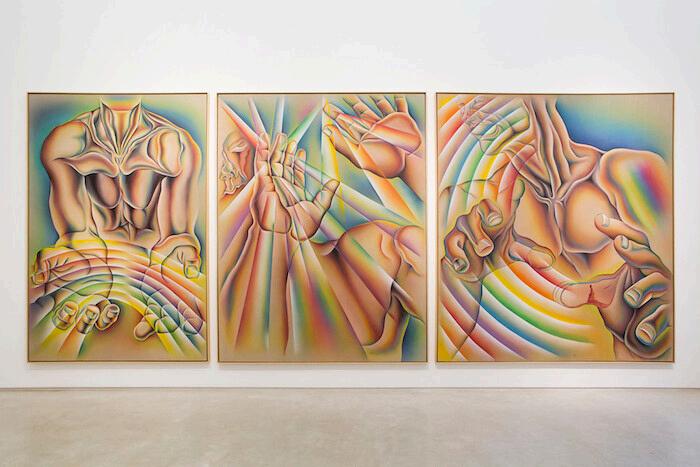
The final work is a vast tapestry filled with quotes from people answering the question: ‘what if women ruled the world?’ The answers, from people all over the world, imagine a society where ‘there would be considerably less violence’ and ‘our culture would reward gentleness’, a world without private property or war or environmental destruction. Throughout her career, Chicago has worked with an endless array of media, particularly those which were overlooked as merely women’s work in the case of tapestry, to assert its importance in the art world Although the message of this piece may be overly simplistic and optimistic, a real sense of power and truth emanates from it, encouraging us as we go out into the world to reflect on the power that lies with feminism
oshy Orr Roshy Orr
YAYOI K YAYOIK

In the world of contemporary art, few have sparked as much intrigue and admiration as Yayoi Kusama. She is a pioneer in every sense of the word - a visionary who has spent countless years using her art to break boundaries, challenge the norms, and define what it means to be an artist. Although she is now one of the most influential and recognised artists in the world, her journey as a Japanese woman into the male-dominated art world was filled with many challenges including gender and racial discrimination. Her work is repetitive and psychedelic and evokes themes of psychology, feminism, obsession, creation and intense self-reflection.
Samaras
However, it is not just her gender and race that led to challenges. She started experiencing vivid hallucinations of flashing lights, auras and dense fields of dots at the age of 10, which soon became the foundation for her art. Clearly, Kusama employed her art, not just as a profession, but an expression of her deeply personal mental struggles and inner turmoil, in a way that words simply could not replicate, passionately attempting to impart her perception of the world to others.
In 1958, Kusama bravely escaped Japan and made it to New York in the hope of finding success, but only confronted more difficulty. A highly male dominated field, not only did she struggle to exhibit, but her very own ideas were stolen by male artists and taken for their own. Claes Oldenburg was 'inspired' by her fabric phallic couch to start creating the soft sculpture for which he would become world famous, while Andy Warhol would copy her innovative idea of creating repeated images of the sole exhibit in her One Thousand Boats installation for his Cow Wallpaper. Worse still, in 1965 Kusama created the first mirrored room environment at the Castellane Gallery in New York, yet only a few months later, in a complete change of artistic direction, avant-garde artist Lucas Samaras exhibited his own mirrored installation at the far more prestigious Pace Gallery. Distraught by this injustice, Kusama threw herself from the window of her apartment.
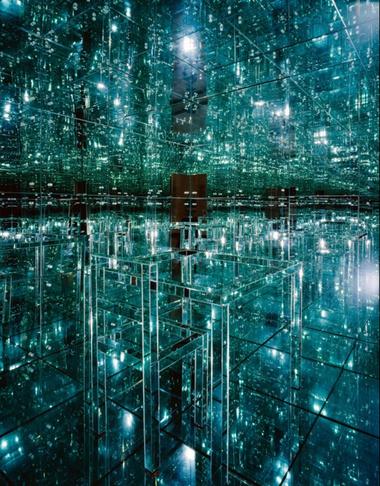
Kusama
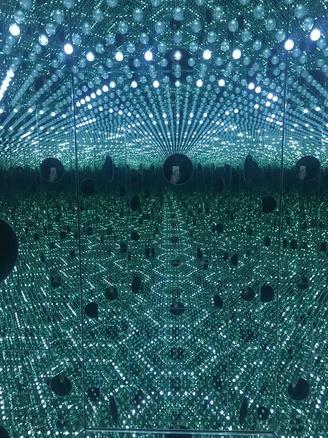
“Our earth is only one polka dot among a million stars in the cosmos. Polka dots are a way to infinity. When we obliterate nature and our bodies with polka dots, we become part of the unity of our environment”
Kusama experimented with a huge variety of media to critique the patriarchy, war and other pressing social and political issues at the time Her performance art did exactly this: she would stage nude female models, painted with her signature polka dot pattern, around New York, commentating on the commodification of the female body. She chose to return to Japan in 1973, a transition made difficult by the fact that her avant-garde style, so admired and celebrated in New York City, was met with huge resistance and even bringing ‘shame’ on her family.
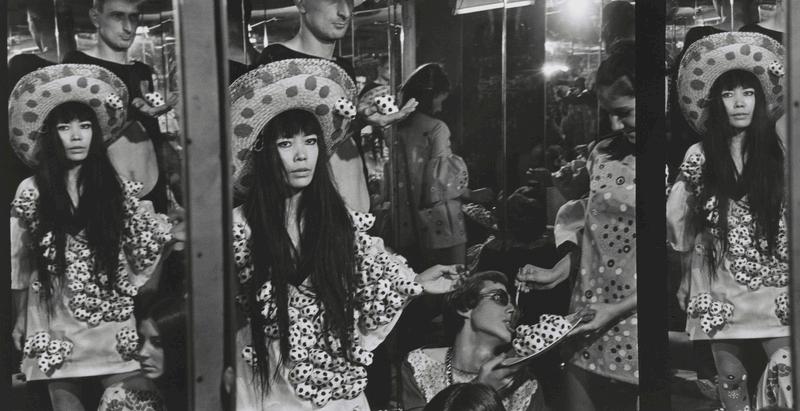
Having been admitted to the hospital multiple times for panic attacks and hallucinations, she voluntarily admitted herself to a psychiatric facility in Tokyo, where she still resides today, however, she did not, as many expected, retreat from the art world Instead, she turned her room into an art studio to follow what she has stated is her “life’s purpose” By this point, Kusama had been virtually forgotten both at home and abroad, but she began to gradually re-establish herself from scratch, and eventually her work was re-evaluated. A retrospective of her work was held at the Centre for International Contemporary Arts in New York in 1989, and four years later, the Japanese art historian, Akira Tatehata, managed to persuade the government that she should be the first solo artist to represent Japan at the 1993 Venice Biennale. The exhibition was a phenomenal success and led to a huge transformation in how she was received and recognised in Japan.
Infinity Mirror Rooms
Her artistic output speaks of a mind that is truly creative, although haunted, which makes for extremely captivating art One such example is her Infinity Mirror Rooms, which not only gained international acclaim but captivated audiences through endless illusion, dissolving the barrier between the art and the viewer. The extensive use of mirrors on all walls in these rooms creates an optical illusion of an infinite tunnel of light and any objects placed inside Over the course of her long career, she has created over twenty distinct Infinity Mirror Rooms. They encourage viewers to lose themselves in the works, whilst becoming immersed in what must be close to Kusama's own visual reality.
All the Eternal Love I Have for Pumpkins

This installation sees an overwhelming number of luminous yellow pumpkins covered in strategically placed black dots. The result is a hypnotic, endless sea of pumpkins that have become Kusama’s characteristic symbol The room invokes her obsessive fascination with repetition of forms, which regularly features in her works.
The Obliteration Room
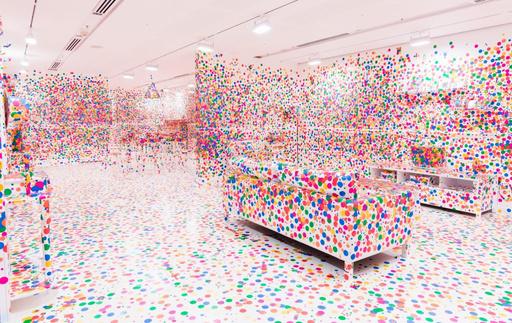
At well over 90, today, Kusama is still astonishingly prolific and one of the most recognisable artists of our time. Her work has proliferated well beyond the gallery sphere, seen most recently in a collaboration with Louis Vuitton, which produced a series of dotted clothes and accessories, demonstrating her immense impact and relevance.
This was an interactive exhibition in which the visiting public were invited to cover a previously white and clinical space in coloured circular stickers. After a few weeks, the space was completely coloured in blues, greens, pinks, oranges and yellows. The word Obliteration in the title inherently invokes the complete destruction of every trace of something.
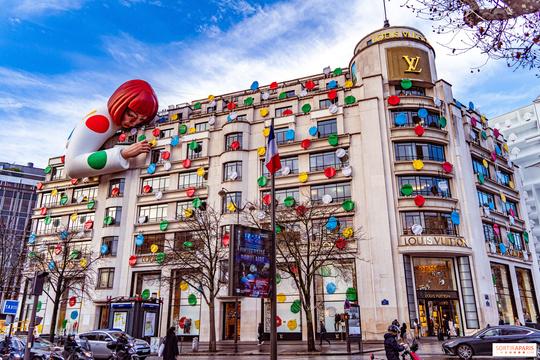

Kusama may be known today as the ‘Queen of the Polka Dots’, but her work is far more than a signature motif, it is an exploration of humanity and the mind, and an attempt to create beauty out of chaos. Her advocation for mental health awareness through her art as well as her position as a Japanese woman in a heavily male-dominated world has opened up doors in the art world for many leaving her with a powerful legacy.
Zanele Muholi describes themself as a visual activist who has, from the early 2000s, documented and celebrated the lives of South Africa’s Black lesbian, gay, trans, queer and intersex communities Raised by a single mother during the period of apartheid under an all white government from 1948-1994, they first turned to photography as a method of self healing Muholi has investigated the severe disconnect that exists in post-apartheid South Africa, between the equality promoted by its 1996 Constitution and the ongoing bigotry towards and violent acts targeting individuals within the LGBTQIA community, through works of photography; some strikingly graphic, others imbued with a gentle glow.
In the early series Only Half the Picture (2003-06), Muholi captures moments of love and intimacy as well as intense images alluding to traumatic events. This series encapsulates natural moments of everyday life that have long been marginalised, asserting the participants as an accepted norm, hoping to offset the stigma and negativity attached to queer identity in African society Muholi’s hope is that the next generation can have access to their work, connecting with the experiences of people who have often been excluded, through an immediate and tangible visual image. Despite their political potency, Muholi’s portraits do not exploit their subjects for a progressivist agenda They are deeply intimate, sensitive, and organic: close-ups of women kissing, dancing at weddings, bathing in colorful baths This kind of representation challenges the centuries-long project to commodify the black female body as the African ‘other’ and the object of a patriarchal colonial imagination.
Other key series of works include Brave Beauties, which celebrates empowered non-binary people and trans women, many of whom have won Miss Gay Beauty pageants, and Being, a series of tender images of couples, which challenge stereotypes and taboos These images are intimate and soft, clearly demonstrating the sensitivity in which Muholi handles such subjects.
In Faces and Phases each participant looks directly at the camera, challenging the viewer to hold their defiant gaze These images and the accompanying testimonies form a growing archive of a community of people who are risking their lives by living authentically in the face of oppression and discrimination Some of these images depict people who have been subjected to the horrendous ordeal of “corrective rape”, evidence that they live in a country still notoriously homophobic, and violently opposed to any kind of gender nonconformity. Not only are there a multitude of images but there are gaps too, signifying and reminding us of all those who have either passed on or have seemingly been forgotten by the system. Muholi’s work perceives each person as a participant rather than merely a subject, thereby eradicating the traditional hierarchy in which the photographer is granted power, instead prioritising forging relationships with each participant, charting their lives according to how they wish to be seen. Muholi’s pictorial archive offers visibility to the invisible, history to the erased, and celebration to the stigmatised
Muholi turns the camera on themself in the ongoing series Somnyama Ngonyama, translated as ‘Hail the Dark Lioness’, in which they experiment with different characters and archetypes that reference specific events in South Africa’s political history. In the portrait Bester I, Mayotte, the sitter’s eyes stare directly at the camera, practically boring a hole in the lens Their lips are painted white, their hair and ears adorned with clothespins and scouring pads, acting as a tribute to Muholi’s mother, Bester Muholi, and speaking to domestic workers’ experiences of labour and servitude. Unlike Faces and Phases, these images are heavily edited to darken Muholi's skin in order to accentuate their striking blackness in all their regal strength and stoicism
In Thulani II, Parktown, 2015, Muholi is dressed as a South African miner in a helmet and goggles, with the implication that they have just risen up from the darkest depths of the earth, bearing the coal dust of their labour This commemorates the Marikana massacre in South Africa in 2012, which saw 112 men shot down, killing 34 as they walked out on strike at a platinum minefield in South Africa. In one image Muholi is portrayed as a black-and-white minstrel, a tribesperson with coils of sinister rope nooses for hair, or with fuse wire around their neck Muholi has also appeared in necklaces of tyres, and wearing a wooden stool on their head in a sardonic pastiche of western ideas of darkest Africa.
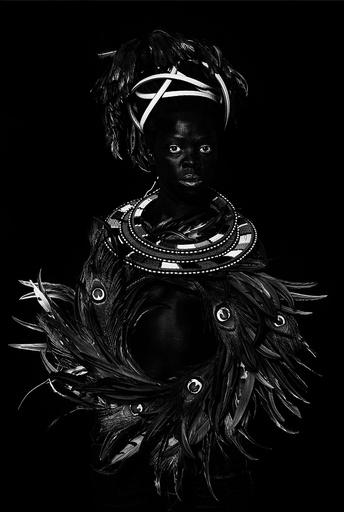
The mordant title of one of their works, Nolwazi (translated as knowledge) is almost as disturbing as the image itself, where Muholi’s hair is filled with pencil This refers to the dehumanising pencil test practice used by the South African government in racial classification under apartheid, shedding a stark light on the harrowing realities of the black experience during this era, thus forcing the viewer to come face to face with this cruel history that is all too recent.
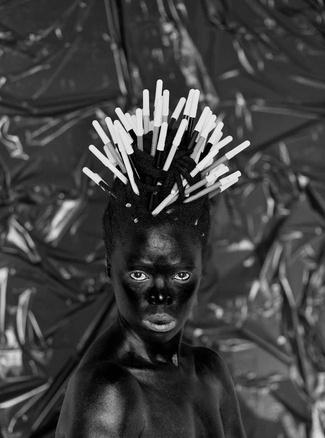
Muholi’s work is an art of agency, one which makes us question race, colonialism, oppression, gender and sexuality This is not merely just portraiture: it is activism
“Historically and in the present day, the body is the most politicised space, so it is crucial to my work. Many have exiled our female African bodies: by colonisers, by researchers, by men. ”
- Muholi
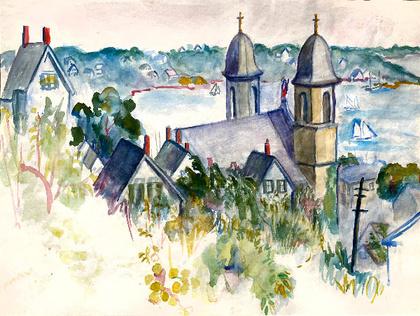
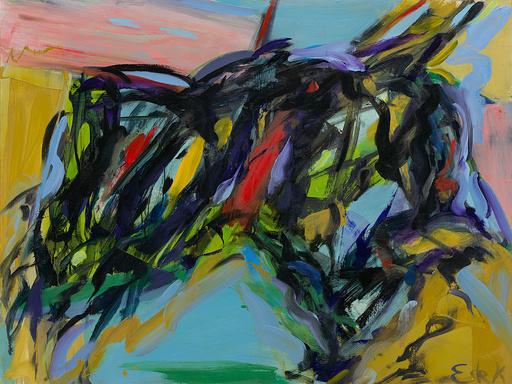
Elaine de Kooning
Jo Hopper
Sophie Tauber Arp
abstraction. Nonetheless her reputation has waned since her death in 1943. Her husband, meanwhile, is still remembered as one of the 20th century’s great artistic innovators, though he himself freely admitted in 1955 that “[Sophie] had a decisive influence on [his] work.” A recent attempt to correct this oversight has seen Taueber-Arp become the only woman to be featured on a Swiss bank note and she received a major retrospective at both Tate Modern and MoMA in 2021.
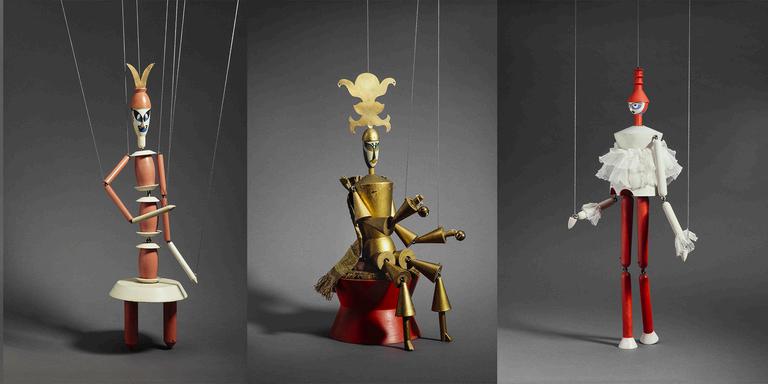
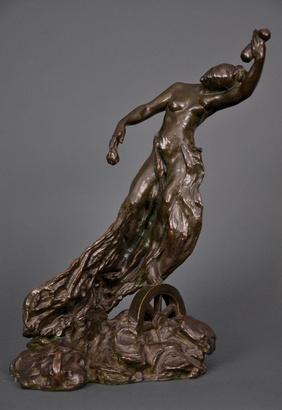
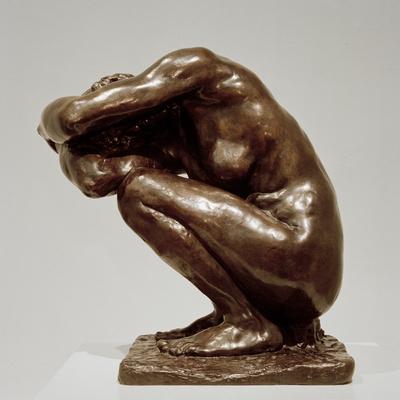
Lee Krasner
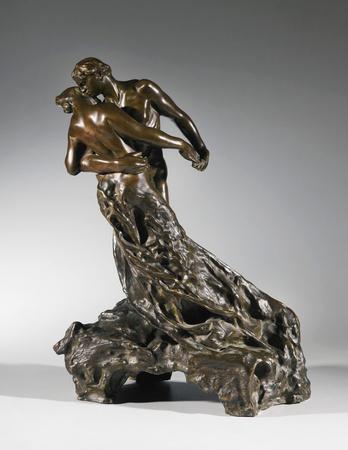

Camille Claudel
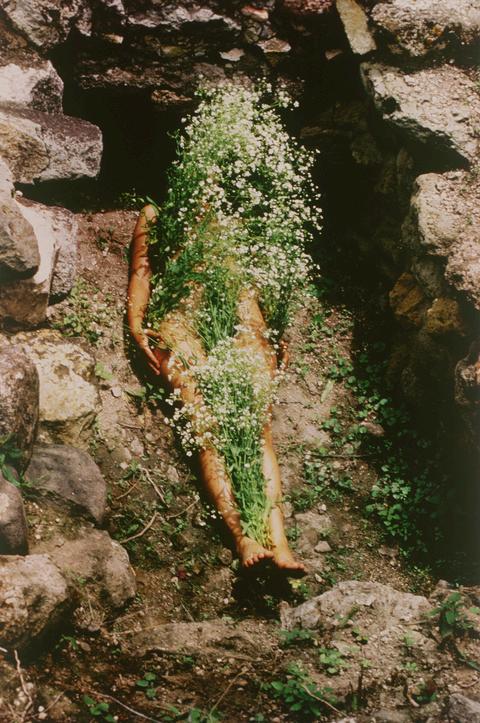
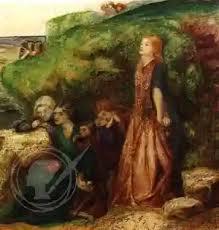
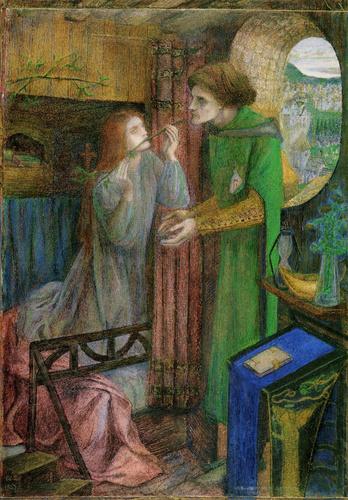

Ana Mendieta
Gabriele Münter
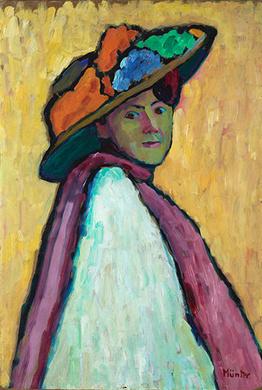

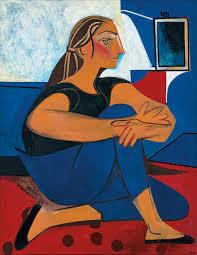

Francoise Gilot

Frida
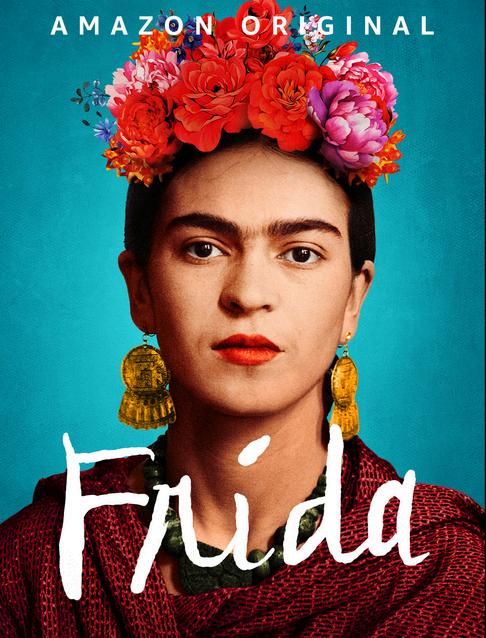

BLK ART:
The Audacious Legacy of Black Artists and Models in Western Art toengage with art b
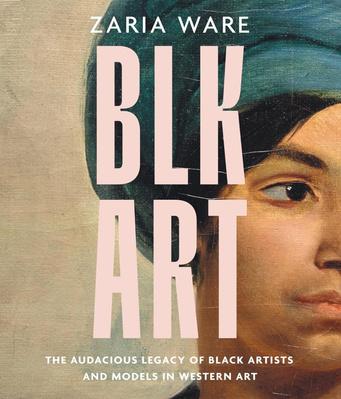

Roshy Orr
Roshy Orr
Maddie Parker
Georgia Parker Ella Guthrie
